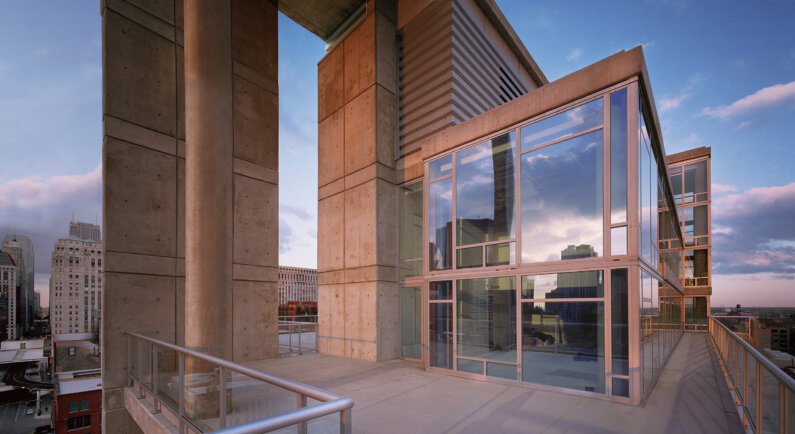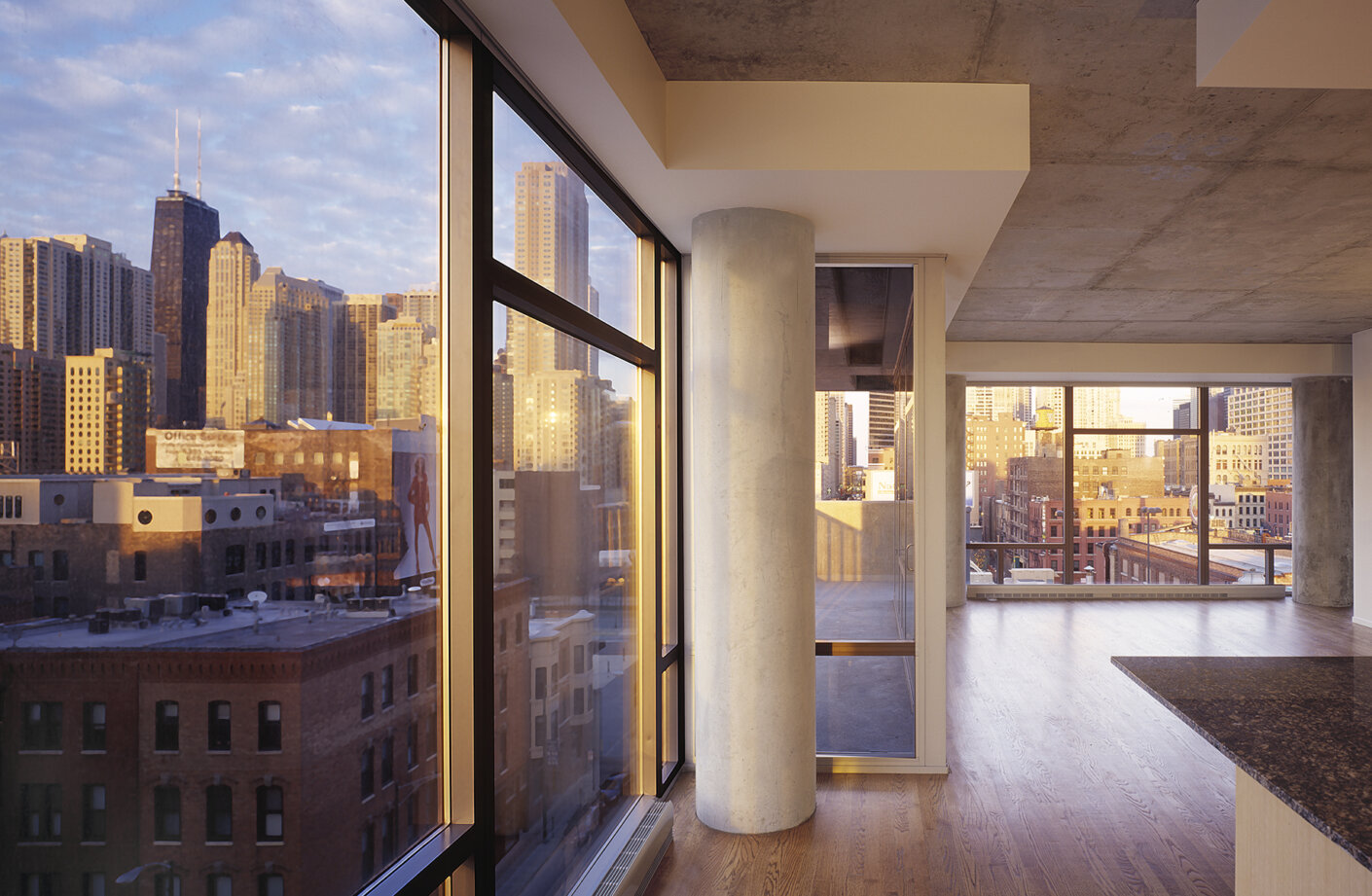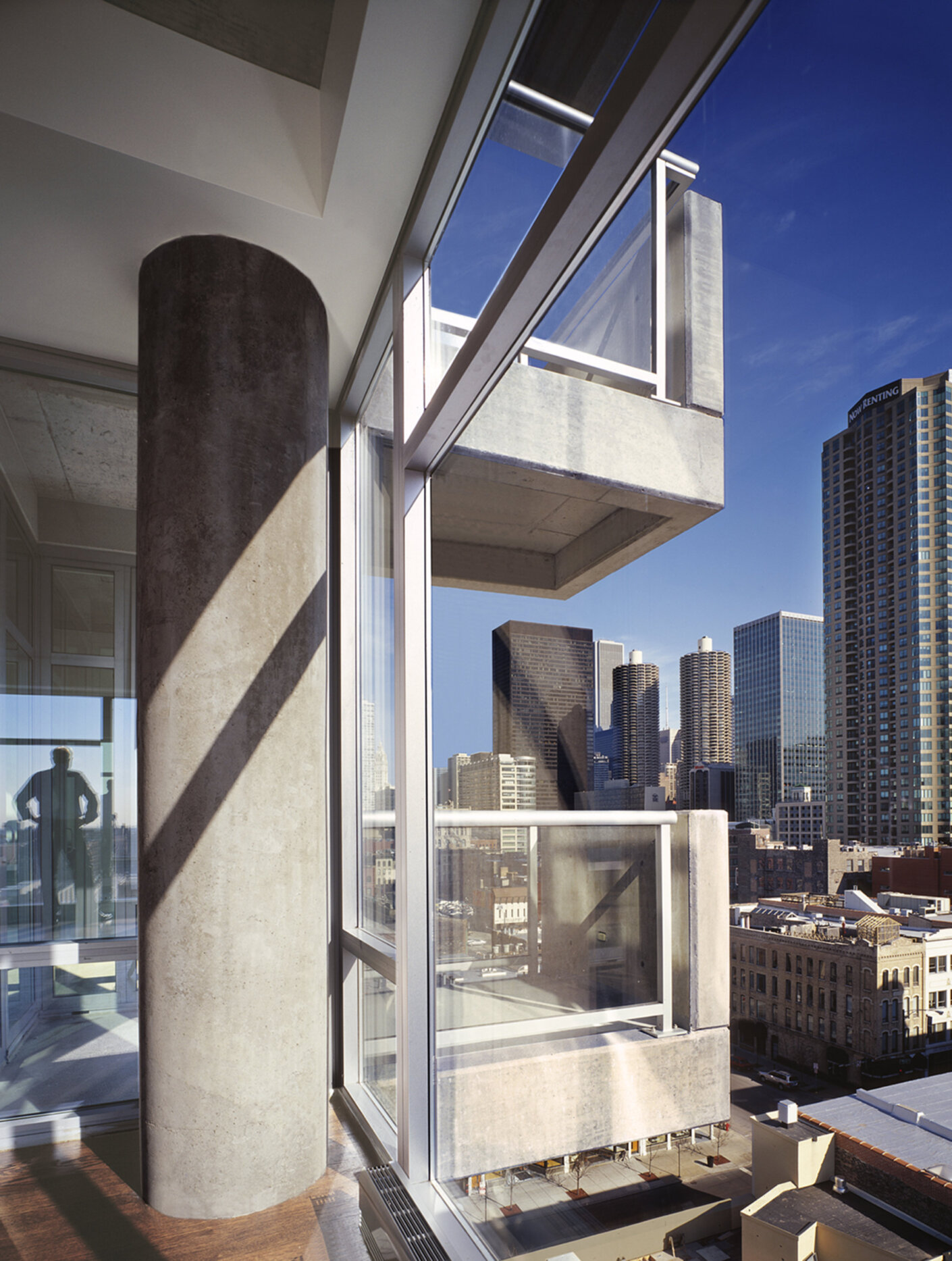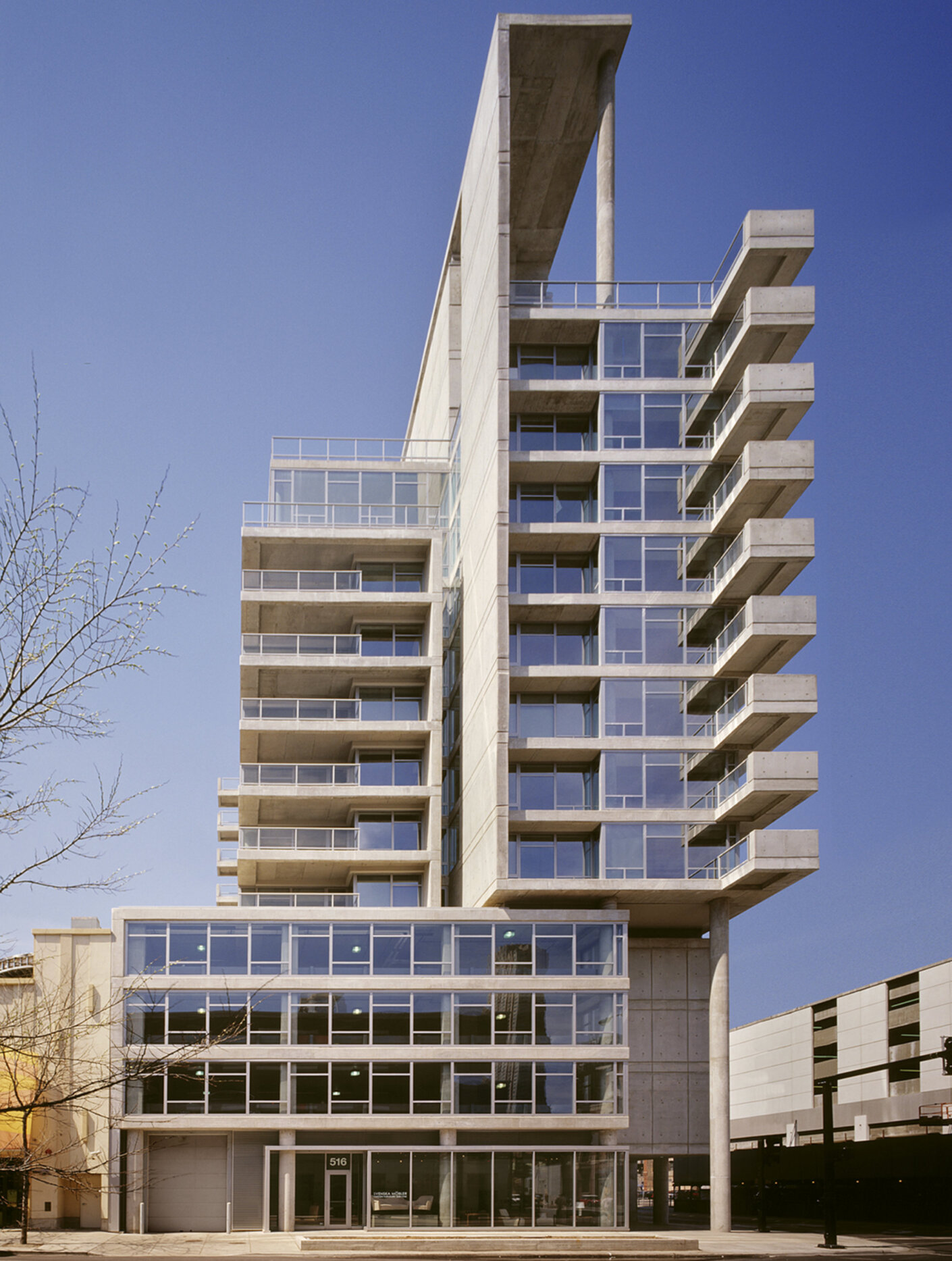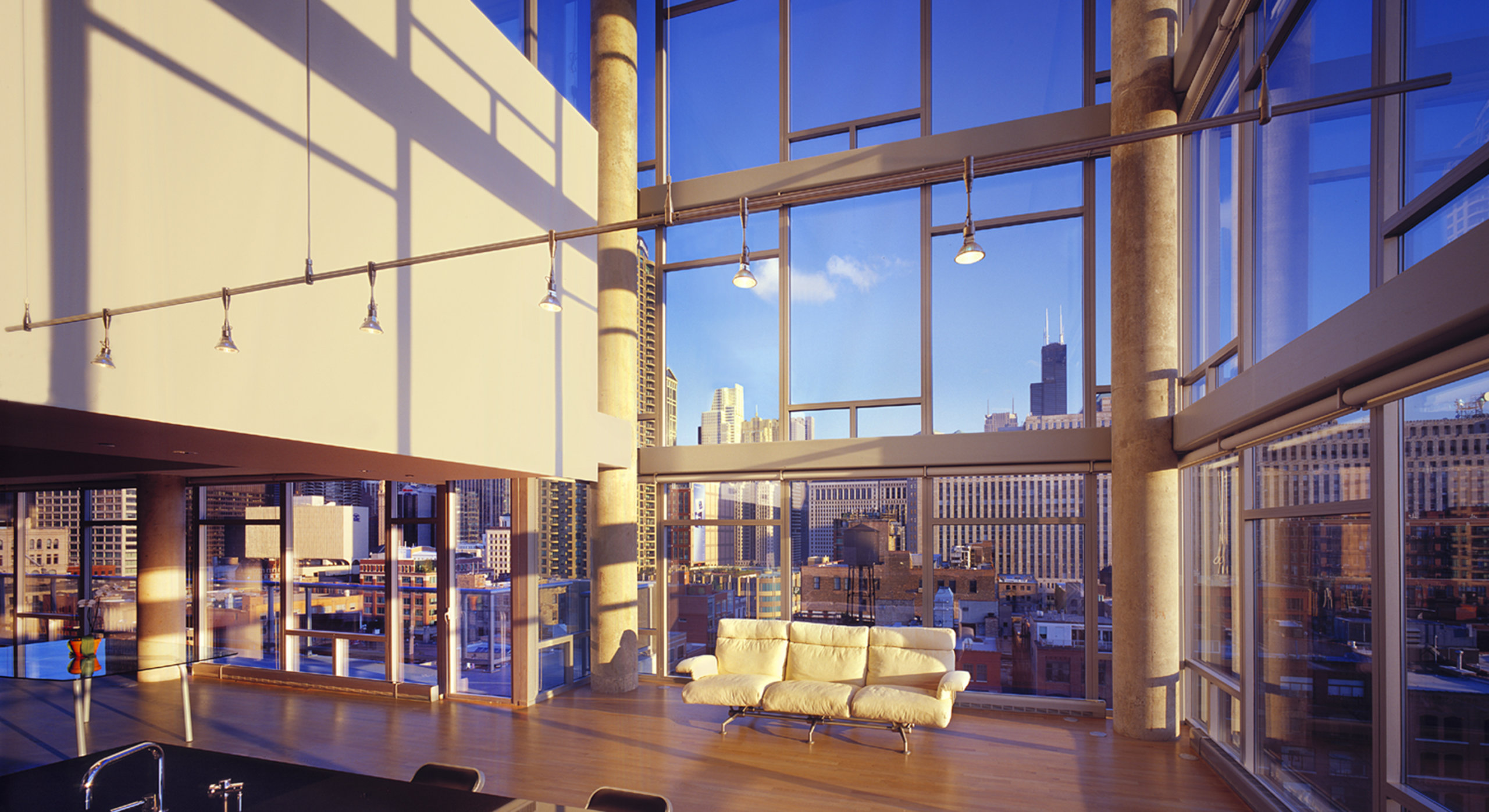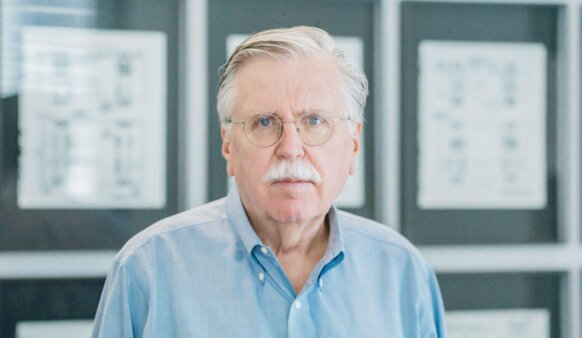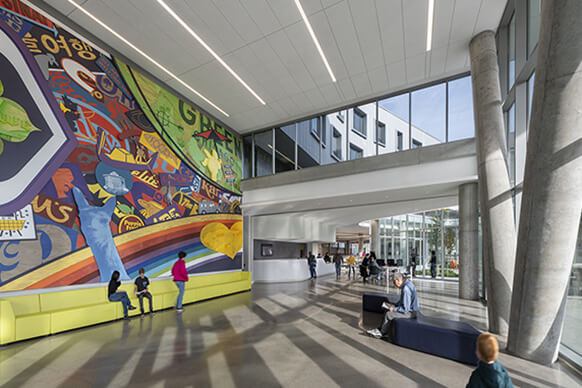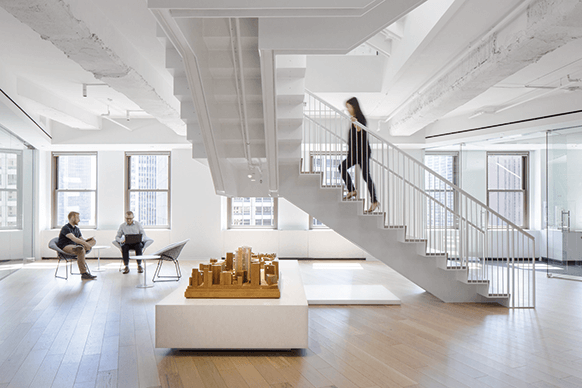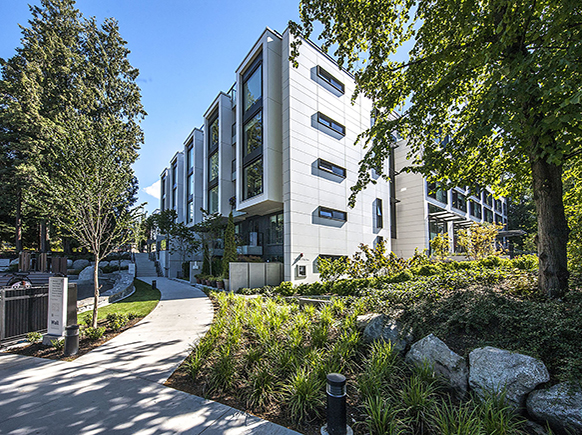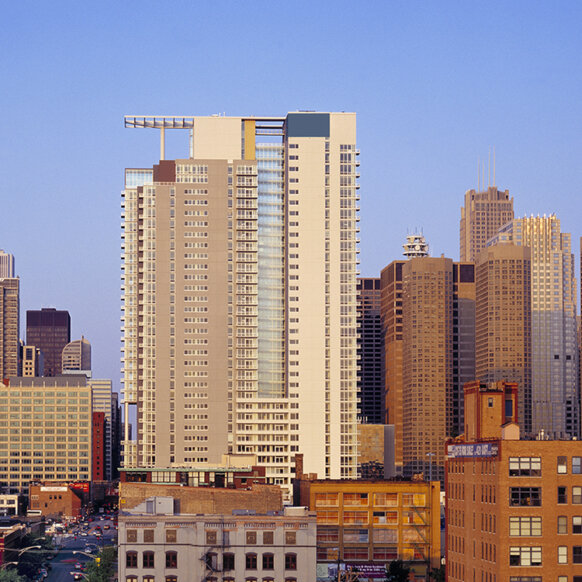
Contemporaine
When Contemporaine was designed, it represented a new type of residential high-rise in downtown Chicago. This sculptural, design-focused building is unique in that it responded to the neighborhood’s context, gently breaking down the building’s mass and suggesting that a newer architectural scale would soon be the norm among local residential buildings.
The developer, CMK, knew they wanted to challenge the status quo. They sought out Perkins&Will as their partner knowing we would deliver a groundbreaking response to their request.
The market was rapidly changing during the design process, so the team was purposefully agile throughout. The team designed the units to easily combine with one another should the market suddenly dictate larger or smaller units.
The success of Contemporaine solidified a relationship with the developer, which has resulted in further collaboration on award-winning projects in Chicago in the years since.
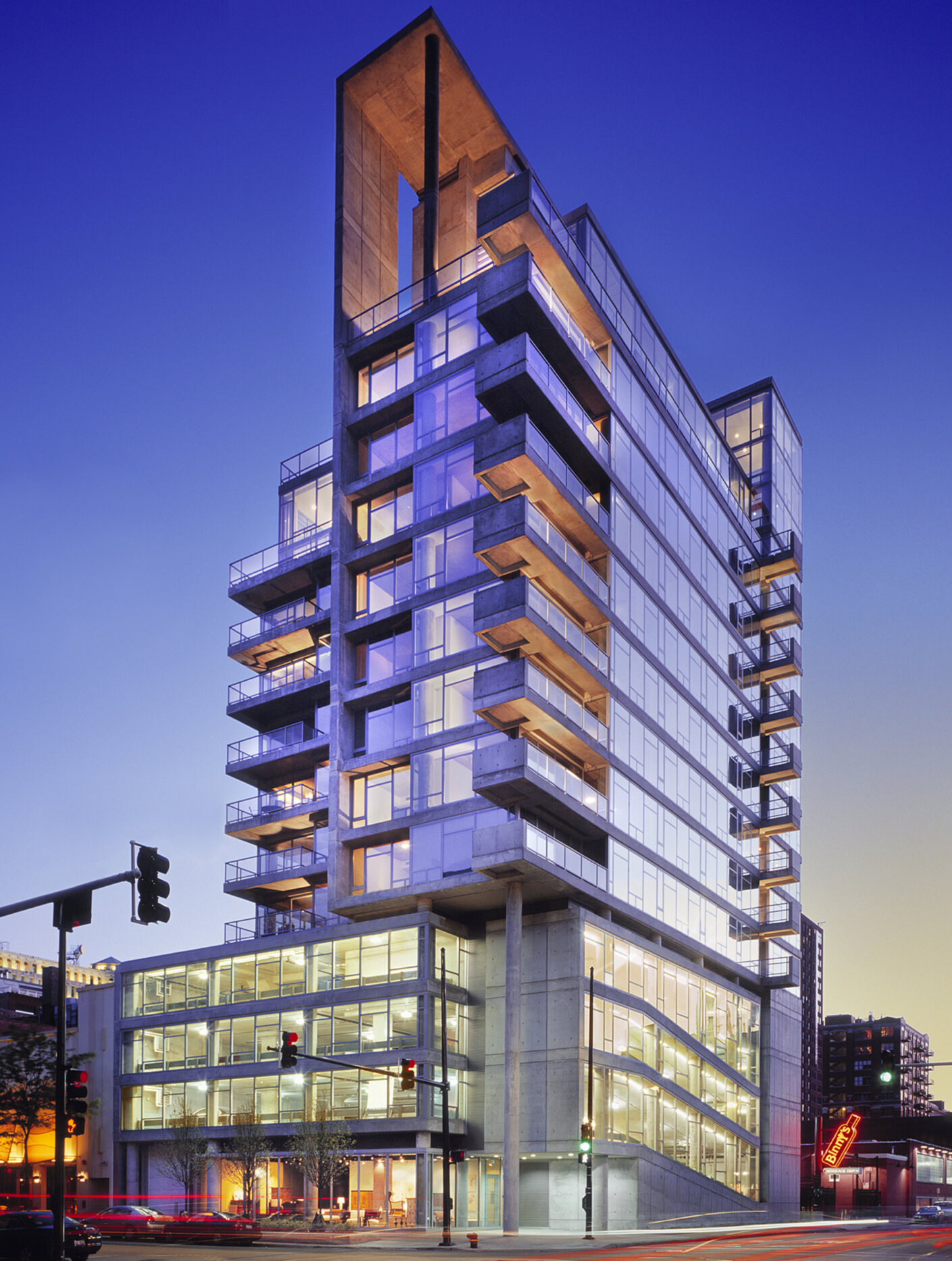
In this bookstore he came across Ralph Johnson’s monograph, and was captivated. He knew he wanted Ralph to design his next project, and cold-called his contacts in the city until he reached Perkins&Will. This was the beginning of a successful relationship with CMK, which continues to this day.
